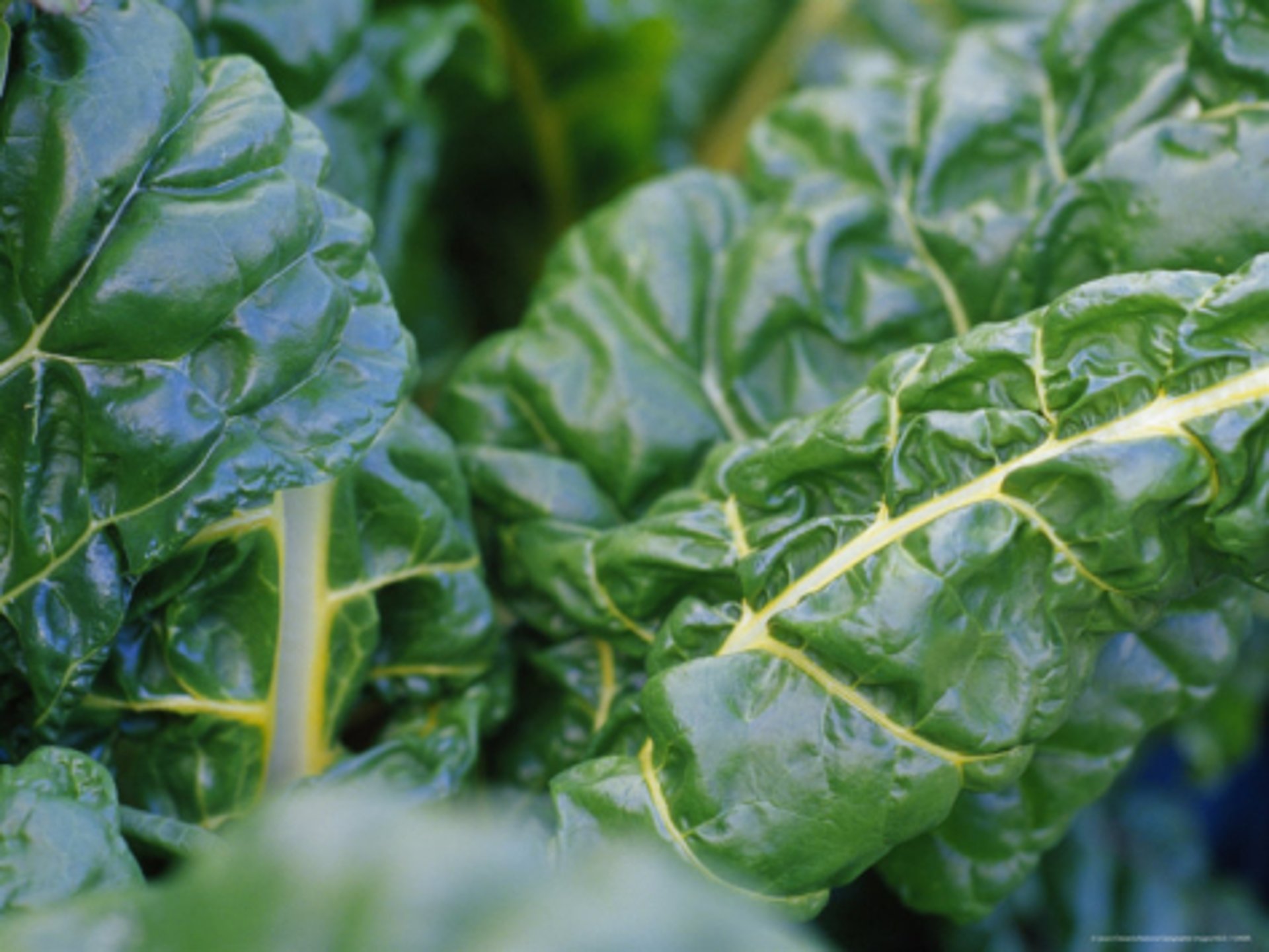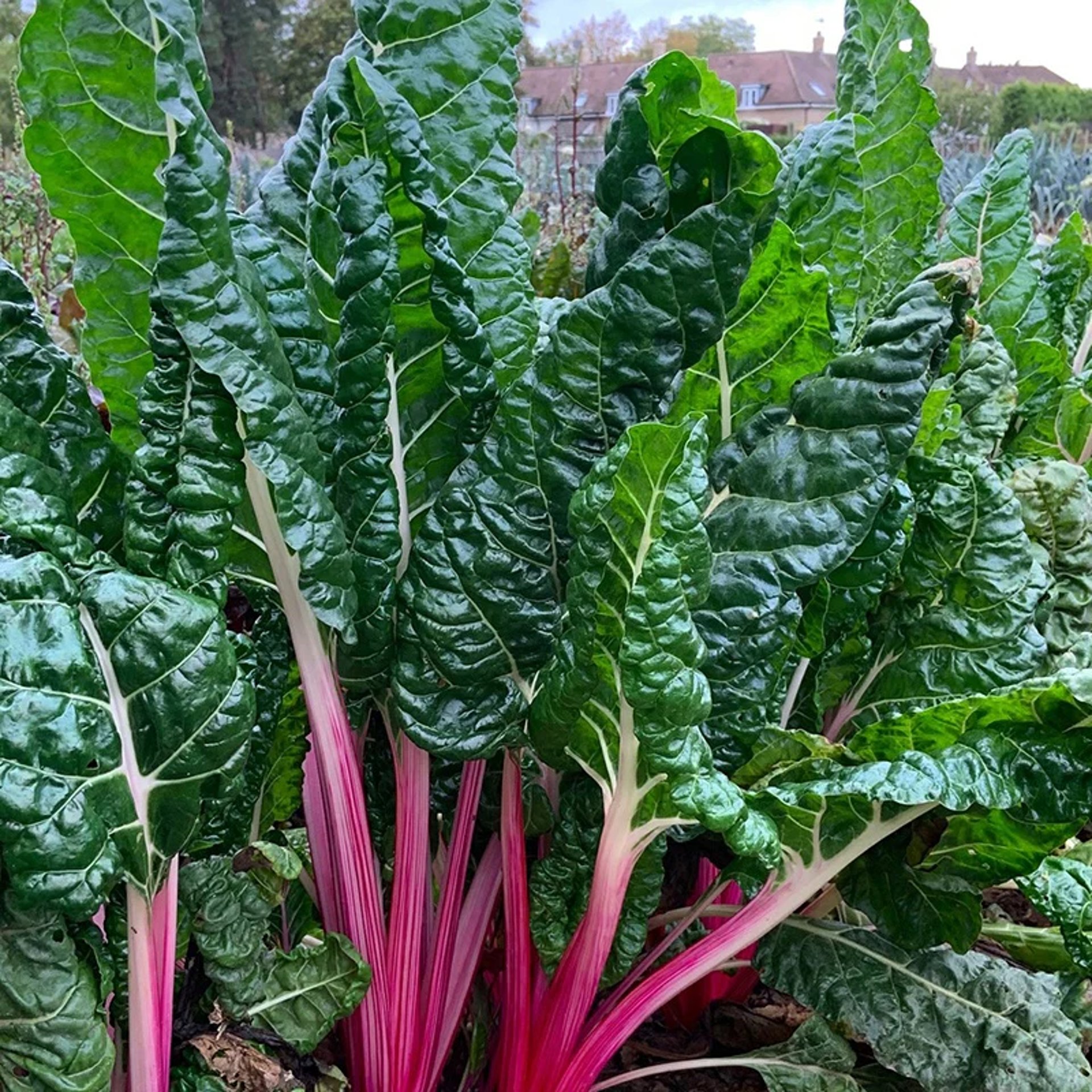
Swiss Chard Nutrition & Health Benefits: Vitamins, Minerals

Swiss Chard Nutrition & Health Benefits: Vitamins, Minerals
Scientific name: Beta vulgaris subsp. cicla
Family: Amaranthaceae
Common names: Swiss chard, silverbeet, seakale beet, chard.
What is Swiss chard?
Swiss chard is a leafy vegetable with crinkly leaves and colorful stems that range from white to bright red and yellow. Rich in vitamins A, C and K, antioxidants (betalains), minerals and fiber, versatile in both raw and cooked dishes. It has a mild, earthy flavor that becomes tender when cooked.
Where does it come from?
Origin: Mediterranean region.
Today: Cultivated worldwide, especially in temperate climates.
How many varieties?
Common varieties include:
Rainbow chard: multicolored stems
Fordhook Giant: large, dark green leaves
Ruby Red: vibrant crimson stems
Seasonality & availability
Swiss chard is a cool-weather crop, typically in season in spring and fall, but is available year-round in most markets due to greenhouse production.
Key benefits
Vitamin-rich: High in vitamins A, C and K for vision, immunity and bone health.
Antioxidant-rich: Contains betalains and flavonoids that protect cells from oxidative stress.
Heart support: Fiber and antioxidants promote healthy cholesterol levels and reduce inflammation.
Digestive support: High fiber content promotes regularity and gut health.
Hydration: High water content helps maintain hydration.
The Anti-Factor
Oxalates: Swiss chard contains oxalates which can contribute to calcium‑oxalate kidney stones in susceptible individuals and may reduce calcium absorption.
How to manage: Cook or blanch to reduce soluble oxalates, consume with calcium-containing foods, stay well hydrated and rotate greens.
Nutritional breakdown (per 100g cooked)
Vitamins
Vitamin A: 6,126 IU, supports vision and immune function (bioavailability increases with cooking)
Vitamin C: 15 mg, supports immune function and collagen production (reduced by roughly 40–60% vs raw)
Vitamin K: 830 µg, essential for blood clotting and bone health (largely retained)
Folate: 9 µg, aids cell division and is important during pregnancy (partly lost with cooking)
Minerals
Potassium: 300 mg, regulates fluid balance and supports heart health (some loss to cooking water)
Calcium: 45 mg, promotes strong bones and teeth (slightly concentrated but some leaches into water)
Iron: 1.6 mg, aids oxygen transport in the blood (bioavailability may improve slightly with cooking)
Magnesium: 25 mg, involved in energy production and muscle function
Zinc: 0.32 mg, supports immune function and wound healing
Macronutrients
Water: 90 g keeps you hydrated and supports cellular function
Energy: 20 kcal low‑calorie option for light meals or snacks
Protein: 2 g provides essential amino acids for repair
Total fat: 0 g minimal contribution
Carbohydrates: 4 g includes natural sugars and dietary fiber
Dietary fiber: 1 g promotes digestive health and satiety
Sugars: 0 g naturally occurring (trace amounts rounded)
Risks
Kidney stones: Oxalates may increase risk in susceptible individuals.
Vitamin K interaction: High vitamin K can affect anticoagulant medications; keep intake consistent and consult your clinician.
Goitrogens: Small amounts may affect thyroid function if consumed excessively, though this is uncommon.
Medication & supplement interactions
Blood thinners: High vitamin K may interfere with warfarin and similar drugs.
Thyroid medications: If you have thyroid disease, discuss large intakes with your clinician.
Digestive enzyme supplements: High fiber may cause bloating when combined with some supplements.
How it affects your body
Cardiovascular health: Antioxidants and fiber reduce inflammation and support cholesterol balance.
Bone health: Vitamin K supports bone mineralization.
Digestive health: Fiber supports regularity and a healthy gut microbiome.
Cell protection: Betalains and other antioxidants reduce oxidative stress.
Who should be cautious?
Individuals on blood-thinning medication, people with a history of kidney stones, or those with advanced thyroid or kidney disease should consult a healthcare professional before large or frequent intakes.
Surprising truths
Swiss chard was named by a Swiss botanist but is native to the Mediterranean.
The stems are edible and add color and texture when cooked or sautéed.
Environmental impact
Swiss chard is relatively easy to grow with modest water needs and low pesticide requirements. Sustainable practices and crop rotation help prevent soil depletion.
Best ways to use it
Sauté or wilt: Quickly cook leaves and tender stems with garlic and olive oil.
Blanch: Briefly blanch leaves to reduce oxalates, then use in salads or pies.
Roast stems: Chop and roast stems to bring out sweetness.
Use raw: Young leaves can be used raw in salads for a mild, earthy flavor.
Add to soups and stews: Fold in near the end of cooking.
Best time to eat
Enjoy Swiss chard during peak season in spring and fall for optimal flavor and texture.
Storage & shelf life
Store unwashed Swiss chard in a perforated plastic bag in the refrigerator; use within about one week. Remove damaged leaves before storing to extend freshness.
Label reading tips
Choose vibrant, firm leaves and crisp stems without yellowing or soft spots. Organic labels indicate reduced pesticide use.
Chef tips
Remove and cook stems slightly longer than leaves for even texture.
Pair with lemon, garlic, nuts or cheese to balance flavor.
For bright color, blanch briefly and plunge into ice water.
Recipe ideas
Sautéed Swiss Chard with garlic and olive oil
Swiss Chard and Ricotta Stuffed Shells
Swiss Chard Smoothie with banana and almond milk
Roasted Swiss Chard stems with lemon and Parmesan
Swiss Chard and White Bean Soup
Science behind it
Swiss chard’s betalains and flavonoids provide antioxidant and anti-inflammatory effects. Minerals and vitamins support cardiovascular, bone and digestive health. Research suggests potential protective roles in metabolic and inflammatory conditions.
FAQs
Is Swiss chard a superfood? Yes, it is nutrient-dense and offers multiple health benefits.
Can you eat Swiss chard raw? Yes. Cooking reduces oxalates and may improve digestibility.
How do you store Swiss chard? Refrigerate in a plastic bag and use within about one week.
info@inspectordeepdive.com
© 2025 food.InspectorDeepDive.com. All rights reserved. Content may not be copied or republished without permission.
This article is for informational purposes only. InspectorDeepDive.com does not provide medical advice. Always consult a licensed healthcare provider before making dietary or health decisions.
